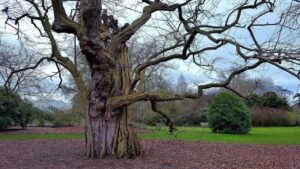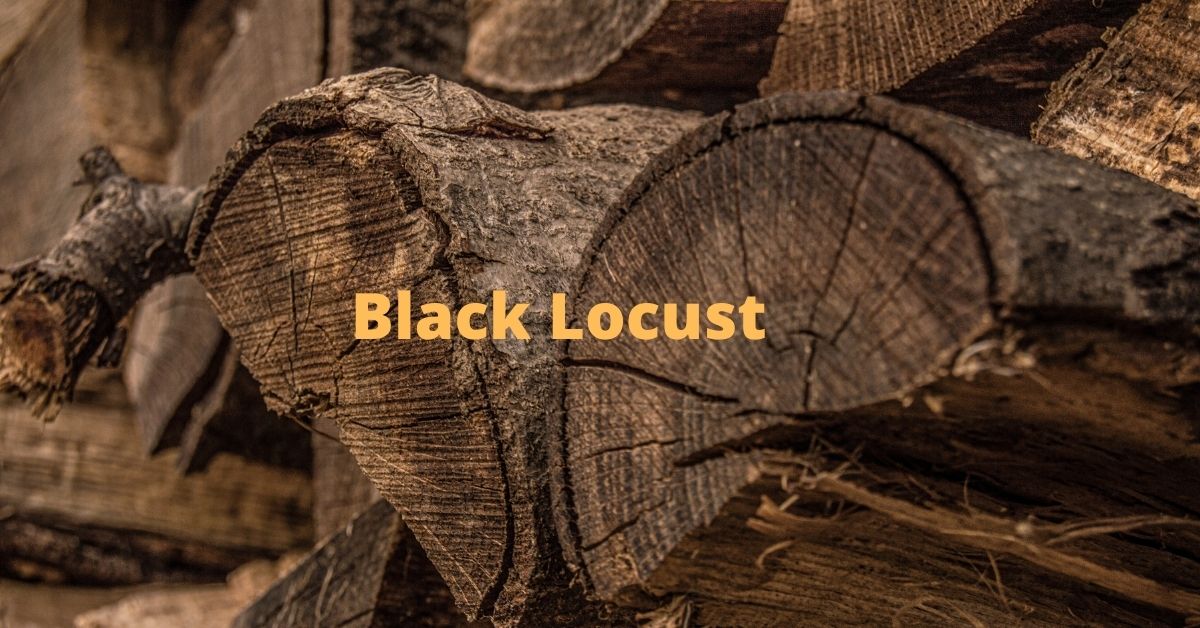Black Locust Firewood is a highly prized firewood alternative. Most people prefer to burn black locusts for their fire instead of more popular choices such as oak or ash. Black Locust has been known to burn more slowly and produce less smoke.
This is great if you want to use wood for camping or your backyard grill. However, it is excellent for burning in a fireplace, as well as other outdoor burning needs.
It is perfect for camping because you can light a fire without worrying about smoke or leaving ashes everywhere.
Black Locust trees have been around for centuries. They have been used for a variety of things, depending on the area they were in. Black Locust trees are found mainly in the south and east parts of the United States.
Contents
How To Identify Black Locust Tree

The black locust tree is medium-sized and can reach 80 feet in height. The paired spines and leaves of the black Locust are easily identifiable.
The spines are found on the twigs near the location of the leaves.
The bark of this tree has a deep color with white lines running across it, much like a grapefruit.
It is a native species of the United States, but it has been planted extensively and naturalized in other parts of temperate North America, Europe, and Southern Africa.
BTU Of Black Locust Firewood
Black Locust produces lots of BTUs when you burn it, or British Thermal Unit as it’s commonly known. It is also a slow-growing, dense, and full-sized tree making it perfect for campfires and even for starting fires from home due to its slow growth and tight spacing.
Since it has higher densities, therefore it has higher burning heat values per 28.3 million cords.
Seasoning Time Of Black Locust
So, how does one season of black locust effectively?
The key to making this firewood last is seasoning it properly. If you’re not familiar with seasoning firewood, You can season firewood by stacking it where the sun can heat it and the wind can blow Through it.
One row of firewood should be exposed to the sun and the prevailing winds. The sun warms and evaporates water from the wood, and the wind blows it away.
Black Locust can technically be seasoned in 6-8 months. If you want it to be seasoned appropriately (higher BTU and a longer burning time), you must give it twice. Black Locust seasoning is best done for one year to one year and a quarter.
Some people believe that seasoning Black Locust firewood indoors for two to three years is the best time.
Black Locust’s natural moisture content is between 26- and 28 percent. You should lower the moisture content of Black Locust to about 20 percent before you burn it. This is where proper seasoning comes in.
Black Locust should have a moisture content of 21 percent or less after six months of seasoning. Wood needs additional seasoning to reach the recommended moisture content of 12 percent.
Smell Of Burning Black Locust
While some parts of this wood contain some natural woodsy smoke scent, most of it has no scent. Black Locust is not like other types of firewood such as Cedar and Oak.
It doesn’t have a distinctive smell. The smell usually is neither unpleasant nor pleasant. It is also one of the few firewoods that don’t smoke or smell. It is therefore ideal for heating your home.
This scent makes the wood toxic to pets and people, but there are ways of making it less so.
Smoke Of Burning Black Locust
This wood is so popular among users because it creates much less smoke, ideal for people. It is easy to split and burn slowly, creating a long-lasting bed of hot coals.
This makes it suitable for overnight burning. When the firewood is seasoned correctly, it produces very little smoke. It is also important to mention that wood can be very smokey if it is burned wet.
You should ensure that your firewood is adequately dried before burning it.
when looking at making black locusts good firewood, it’s essential to understand that the smoke it produces will differ from what you get from burning a log.
Smoke from wood that has just been seasoned won’t have nearly as much aroma or color. Instead, what you’re going to get is a unique type of charcoal odor.
Creosote
Creosote is a side effect of burning wood. It’s a tar-like substance that’s slowly deposited on the chimney’s walls by wood smoke.
Although it is not a problem if you have small amounts, creosote can cause severe problems if it builds up.
Creosote buildup can affect the ventilation in your chimney and can also cause chimney fires.
Black Locust and most hardwood firewood have lower sap levels, producing less creosote than pine or other very sappy woods.
How To Burn Black Locust Properly
When using black locust firewood, the wood must be adequately prepared. For starters, it must be cut into uniform lengths.
Long pieces of broomstick-sized pieces are used when making short firewood baskets. This makes it easier to control and spread the heat when using it as a source of heating.
You shouldn’t put too much Black Locust in your woodstove at once, as you could end up throwing all your doors open in February. This stuff burns hot.
There have been stories about woodstoves that glow orange from too much Locust shoved into the stove. This wood is not easy to find, so use it sparingly.
Although black Locust is a good choice for firewood, dealing with the tree can be pretty tricky. Locusts are known for their sharp spines close to the leaves. Handling the wood can be difficult due to these spines.
It is therefore essential to have a pair of leather gloves or latex-dipped gloves. The black locust tree is a hardwood, but it’s unique because it grows faster than most softwoods. Even though the tree is growing at a rapid pace, it can still be quite sturdy.
It Produces dense, complex, and heavy firewood. Rapid growth can overwhelm specific fields, making it difficult to control or limit the spread.

